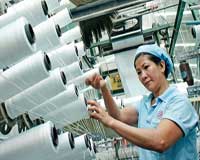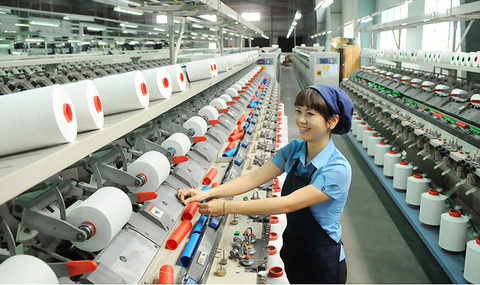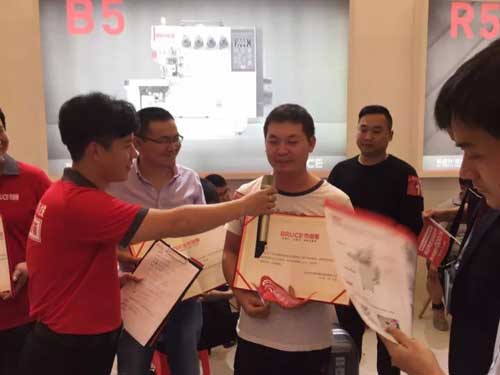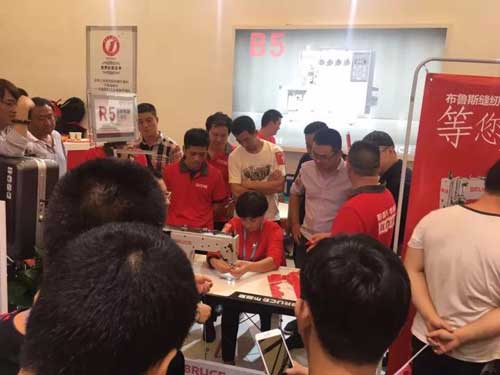FW
Cotton prices have fallen in India and it can go down further when arrival starts picking up around Diwali across the country. The rise in acreage compared to previous year and a bumper crop are seen as the biggest factors that can see cotton prices stabilizing at around or even lower than the minimum support price.
The MSP for medium staple fiber of 27.5 to 28.5 mm length which is produced in Punjab is Rs 4,020 per quintal. Going by prices in the previous year, when they touched Rs 5,500 to Rs 5,600, cotton growers were expecting handsome prices this year as well.
After spending on pesticides and insecticides for fear of pest attacks on the cotton crop, cotton growers of Punjab are facing a double whammy of higher input costs and lower selling prices. Cotton was sown on 108.5 lakh hectares in the country in the previous season and in Punjab, Haryana and Rajasthan it was sown on 12.5 lakh hectares. This time, the acreage increased to 123 lakh hectares across the country and in Punjab, Haryana and Rajasthan it increased to 16 lakh hectares.
In the country, 350 lakh bales were produced last season and the number is expected to reach 385 lakh bales. Total consumption in India is of around 320 to 325 lakh bales. So 60 lakh bales will be surplus. This factor has brought down prices.
Hessnatur, an organic brand from Germany, has introduced high quality and ecologically sustainable fabrics for selvedge denim. Selvedge jeans are handmade from natural materials as its raw materials bio cotton and indigo plant are cultivated under fair conditions as well as in its natural environment.
Selvedge comes from the English self-edged and stands for the original selvage of the fabric. A selvedge jean can be seen on the outer seam. Here the two original selvedges meet each other on the inner side of the pants. This looks beautiful, and is particularly durable, as the edges cannot fray. The selvedges are straight, the jeans are also available in a straight unisex cut.
Hessnatur selvedge jeans are a favorite for all who appreciate tradition and craftsmanship. Every jeans is woven on traditional Japanese handlooms: the fabric is softer, no sizing agents are used, since the warp threads are less stressed than in industrial processing. It takes a weaver around ten days to prepare and weave 35 meters of denim fabric.
Hessnatur has chosen Bangladesh as it has become a major sourcing hub for trendy denim products. This project is about job creation in one of Bangladesh’s least developed areas and the preservation of traditional crafts. The idea is to promote traditional craftsmanship with regard to ecological and social sustainability as well as to create jobs in one of the least developed areas of Bangladesh.
People want denim with color. There’s more trend towards colors, less towards indigo. Diehard denim buyers won’t be looking away from the trusty blues but those that follow fashion will likely be keener on color for the coming season.
Corduroys and velvet will start to introduce color into more bottom weights, which will then lead to greater uptake in twills. Corduroys in the coming season will come with colorful tie-dye effects—which many customers have expressed interest in—or in pinks or coral colors with detailing at the cuff.
Hong Kong-based Prosperity Textile, which does garment and piece dyes for its Feel It collection of denim with Tencel branded lyocell fibers, has pink and olive colors in the line. Tencel holds color well. Thailand-based AMC has been aggressive on color for some time. AMC does double dye denim, where the fabric gets dyed khaki and then a color pigment coating is added to the face. When washed there is color loss and distressing reveals the original color of the jean—and buyers are keen on the coloring.
The denim area of Premiere Vision Paris showed colors from coral to pink, olive and tie-dye. Japan’s Toray has an indigo velvet blazer with cotton. The indigo gives the jacket an authentic denim look. Since customers like soft fabrics, Toray uses Lenzing modal and Tencel for most of its collection.
Apparel fabrics trade show Première Vision Paris was held September 19 to 21, 2017. More than 60,000 visitors attended. The number of exhibitors also grew thanks to the addition of The Sourcing Connection and Bag & Shoe Manufacturing sections.
The number of international buyers, coming from 129 different countries, increased by 8.5 per cent and accounted for a 73 per cent share of the event’s visitors. The most represented countries were in order France, followed by Italy, the UK, Spain and China. Turkey overtook both Germany and the USA, while Japan snatched ninth place from Belgium.
The show was buoyant not just in terms of visitors. Exhibitors at the PV Leather show, which was quieter than its neighbors in recent seasons, noted a new kind of energy, welcome news for the industry. One of the highlights of Première Vision Paris was the ceremony for the PV Awards, whose jury was headed this year by an international celebrity, actor and designer John Malkovich. Besides its conference program, notably focusing on Fashion Tech, the Parisian show staged a plethora of other events, including exhibitions, performances and a concert, all of them adding to the session's special atmosphere.
The show also announced the launch in 2018 of the Première Vision marketplace, a virtual extension of the event's various different sessions, initially offering access to exhibitor samples.
Due to a hike in prices of gas and electricity in Bangladesh, businesses are facing hardships. Uninterrupted supply of gas and electricity is a must for the textile industry, as blackouts significantly degrade the quality of spin. A number of factory owners are facing trouble as they do not have any forward linkage industry and are struggling to survive.
Over the last two years, gas prices have seen a 222 per cent jump. A crisis in the primary textile industry may create a negative impact in the country’s 28 billion dollar apparel industry, as the former industry supplies the lion’s share of raw materials to the latter.
If there is any adverse impact on the primary textile industry, it would consequently hurt the apparel sector, as manufacturers will have to buy the material from other countries at a higher price. The textile industry contributes more than 12 per cent to the country’s overall GDP. Almost 90 per cent of the demand for knits, and 40 per cent of the demand for woven fabrics, by the export oriented readymade garment sector are met by the primary textile sector.
To cope with existing power crisis, primary textile millers want the import of energy efficient machinery to be allowed.
Egypt’s textile exports increased by about 12 per cent this year while imports declined by 59 per cent. A national strategy is being prepared for the textiles, spinning, and readymade clothing industry aimed at promoting the textile industries sector in Egypt in all stages of production from cotton cultivation until accessing the final product.
A new textile city will be established. The industry will be upgraded to meet the needs of the local market and to promote Egyptian readymade clothes to global markets. The country is exerting efforts to curb smuggling operations, which negatively impact the textile industry. Measures will be taken to eliminate these illegal practices.
Effective initiatives will be adopted to increase investment and export rates within the textile sector. Egyptian long staple cotton is famously used for luxury linens. It trades at a high premium compared to the more common short-staple cotton.
In the past two years, Egypt has taken measures to restore seed purity and cotton quality. Egyptian cotton’s length, strength, firmness, color, trash count and maturity have all improved in 2016-2017 compared to 2015-2016. This development has increased the demand and the prices for Egyptian cotton in local and international markets.
Jesse Daystar is new vice president and chief sustainability officer of Cotton Incorporated. Before joining Cotton Incorporated, he was director at the Duke Center for Sustainability and Commerce at Duke University, where he also taught. He earned a doctorate in forest biomaterials from North Carolina State University.
His experience includes sustainable chemical process development and efficiency management program development with the National Council for Air and Stream Improvement.
Daystar is well-versed in the complexities of sustainability research, particularly as it relates to cellulosic fibers, including cotton. His research has appeared in scholarly journals and his consulting work has led to the development of sustainability and chemical engineering tools and certifications for clients including the United States Department of Agriculture, Department of Energy, Eastman Chemical, and Piedmont Biofuels.
Cotton Incorporated is the research and promotion company of US cotton producers and importers. Cotton Incorporated, funded by US cotton producers and importers of cotton and cotton textile products, conducts worldwide research and promotion activities to increase demand for and profitability of cotton. It has a commitment to sustainability of cotton across the supply chain.
Daystar brings a wealth of experience and knowledge to this newly created role, which will oversee and coordinate Cotton Incorporated’s internal and external sustainability efforts.
People want denim with color. There’s more trend towards colors, less towards indigo. Diehard denim buyers won’t be looking away from the trusty blues but those that follow fashion will likely be keener on color for the coming season.
Corduroys and velvet will start to introduce color into more bottom weights, which will then lead to greater uptake in twills. Corduroys in the coming season will come with colorful tie-dye effects—which many customers have expressed interest in—or in pinks or coral colors with detailing at the cuff.
Hong Kong-based Prosperity Textile, which does garment and piece dyes for its Feel It collection of denim with Tencel branded lyocell fibers, has pink and olive colors in the line. Tencel holds color well. Thailand-based AMC has been aggressive on color for some time. AMC does double dye denim, where the fabric gets dyed khaki and then a color pigment coating is added to the face. When washed there is color loss and distressing reveals the original color of the jean—and buyers are keen on the coloring.
The denim area of Premiere Vision Paris showed colors from coral to pink, olive and tie-dye. Japan’s Toray has an indigo velvet blazer with cotton. The indigo gives the jacket an authentic denim look. Since customers like soft fabrics, Toray uses Lenzing modal and Tencel for most of its collection.
CISMA has been going on for four days with a flood of people, Many booths are bustling. Bruce booth is one of them.
CISMA launched on September 26th this year, and the birth time of Bruce's new computerized lockstitch sewing machine R5 was just in time to catch the last express train for CISMA .
On September 14th, Bruce R5 sewing machine hit the world’s longest recordof the continuous empty step without any break of thread. Its superior performance attracts the attention of the section world——if you are afraid of skipping, afraid of break, pls choose Bruce.
The section world was boiling with this exciting message that the machine will be presented in CISMA.
Bruce’s booth is located in hall W1, booth no.1,nearest to the entrance. The crimson tone, coupled with Bruce's dazzling display, attracte the attention of the visitors at once.In the exhibition site, Bruce launched the "Bruce sewing world record challenge", so that visitors can personally experience the stability and operational comfort of R5 ,even challenge the world record—— Bruce’s computerized lockstitch sewing machine being no thread break for 64.8 meters by continuous empty steps.In just a few minutes, the number of applicants exceeded the rules of the competition.When competition ended, although no one can break the Bruce’s 64.8 meter world record, nevertheless, the result also makes people pleased and satisfied. A number of Challenger scores reached more than 40 meters, and the top record is 46.64 meters, quite closely to the world record.
Bruce Industrial Sewing Machinery Company was founded in 2006, the company is located in Taizhou City, Zhejiang Province. China. which is the world’s most important production and R & D base of sewing machines.With introduction of most advanced technology and equipments, the company has nearly 100 high precision machining centers and tens of millions of investment of testing equipment, fully guarantee the stability and reliability of products. It is the domestic leading sewing machine manufacturer, productssale are among the top within country, with saling network covering more than 30 domestic provinces, cities and autonomous regions, the company’s business also enter more than 100 countries and regions of the world.
"Vietnam has slowly and steadily gained major ground in world’s biggest apparel market – the US -- with its high quality textile offerings. As Vu Duc Giang, Chairman, Vietnam Textile and Apparel Association (VITAS) points out Vietnam's textile and garment export turnover, in 2017, is estimated at $30.5 billion, of which the US market accounts for approximately 51 per cent of total turnover. In the first eight months of 2017, textiles and garments exports grew steadily, with export value increasing by 9.9 per cent, over the same period last year, to $19.8 billion."

Vietnam has slowly and steadily gained major ground in world’s biggest apparel market – the US -- with its high quality textile offerings. As Vu Duc Giang, Chairman, Vietnam Textile and Apparel Association (VITAS) points out Vietnam's textile and garment export turnover, in 2017, is estimated at $30.5 billion, of which the US market accounts for approximately 51 per cent of total turnover. In the first eight months of 2017, textiles and garments exports grew steadily, with export value increasing by 9.9 per cent, over the same period last year, to $19.8 billion. Currently, textile and garment exports to the US account for the largest share of the industry, making up around 51 per cent of the export market share.

Meanwhile, Vietnam is also importing cotton from the US for its spinning industry, accounting for up to 60 per cent of its total demand. In recent years, cotton cultivation area in Vietnam have narrowed down to just 0.04 per cent of the total demand. Meanwhile, American cotton is considered the best for Vietnamese spinning, due to less impurities and a tightly controlled production process.
Cotton Day
And to create favourable conditions for the Vietnamese textile and garment enterprises to approach the US cotton market, VITAS and the US Cotton Council International (CCI) recently held Cotton Day in Ho Chi Minh City. This event says Giang, created an opportunity for US firms to evaluate the potential and importance of the spinning and textile industry in Vietnam, before making proposals to the US Government for policies to support the spinning, textile and garment industry in the Southeast Asian country. The most important recommendation made at the forum was the establishment of cotton bonded warehouses in Ho Chi Minh City and Hai Phong to help in creating better opportunities for Vietnamese spinners to access US cotton products, while reducing buying times and financial pressure.
Cotton Day 2017 bridged gaps between both countries, presenting an opportunity for Vietnamese fashion brands and Vietnamese businesses, who have not yet exported to the US, to seek opportunities for cooperation with US enterprises and buyers. VITAS says, Vietnam’s cotton imports increased over the past 10 years from 150,000 tons in 2005 to approximately 1.2 million tons in 2016, with US cotton making up a large proportion. In the first seven months of 2017, Vietnam imported 808,000 tons of cotton, worth $1.47 billion, annual rises of 32.6 per cent and 58 per cent, respectively. The US accounted for 60 per cent of the market share, marking a milestone in the development of US cotton in Vietnam.
Aiding companies
To enhance business prospects, the CCI granted licences to 12 Vietnamese businesses using the Cotton USA™ label, including Hoa Tho Textile, Dong Xuan Knitting, Phu Cuong Spinning, Phu Gia Spinning, Viet Hong Dyeing, Sunrise Spring Vietnam, Thanh Cong Textile and Vi Son Textile. The use of Cotton USA™ labels will help consumers recognise quality products, and help exporters enjoy favourable conditions when exporting textiles to the US.
William Bettendorf, Director, CCI explains in recent years, the Vietnam textile and garment industry has made steady growth, becoming a bright spot in the global textile industry. Currently, Vietnam is the largest customer of the American cotton industry. This initiative marks the first year of support from CCI to create more favourable conditions for Vietnamese exports and better transparency for consumers concerning the origin of materials.













